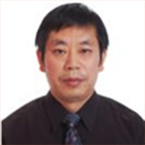先进固态超快激光器及其应用的最新进展 Recent progresses of advanced solid-state ultrafast laser and application
演讲课题:先进固态超快激光器及其应用的最新进展 Recent progresses of advanced solid-state ultrafast laser and application
演讲人:魏志义 Zhiyi Wei
演讲摘要:
Diode laser pumped mode-locking solid-state laser and fiber laser have attracted extensive interesting by laser community as the new generation ultrafast laser sources. Compare to the femtosecond Ti:sapphire laser, either diode pumped bulk laser or fiber laser, it shows performances of high average power, compact size, robust stability and low cost, which make them are the ideal laser sources for laser fine fabrication in micrometer and nanometer scale. In addition to, the femtosecond solid-state lasers also could be used for laser acceleration, drive high order harmonic wave, optical frequency comb, optical parametrical oscillation and amplification etc., Up to now, CW average power up to 100 W was obtained from a Yb:YAG thin-disk laser with sub 10fs duration. By compressing the fiber laser pulse, S.Haedrich et al has generated 6.3fs laser pulse with average power of 216W, corresponding to a single pulse energy of 170 microjour, these unprecedented results opened a new landscape for high power laser with few cycles pulse duration. In this talk, I will report the new progresses on solid-state lasers and fiber laser with high power and short pulse. Stable Kerr-Lens Mode locking (KLM) operation were demonstrated in some new ytterbium lasers such as Yb:YGG, Yb:GSO, Yb:CYA, Yb:YCOB etc, In particular, 33fs laser pulse was generated from the diode pumped KLM Yb:YCOB laser. Average power up to 15W femtosecond laser was obtained from the KLM Yb:YAG disk laser. By pump the multi-pass Nd:YAG amplifiers following the regenerative amplifier with 750W diode lasers, pulse energy of 64.8 mJ with 10ps pulse duration was obtained at the repetition rate of 1 kHz. In the researches on mode-locking fiber laser, we generated 10.5 microjour laser pulse with 424 fs duration based on CPA technique under repetition rate of 100 kHz to 1 MHz. A mode-locked rod-type femtosecond laser at J energy was developed for high order harmonic generation. In addition to, an all-normal-dispersion (ANDi) mode-locked laser based on nonlinear polarization evolution (NPE) technique was adopted by using this rod-type fiber with polarization maintaining (PM) characteristic. 31 W of average power at repetition rates of 57.93 MHz, which corresponds to the pulse energy of 0.5 J, is demonstrated under a pump power of 93 W. The pulse duration of 124 fs after compressor is obtained at the central wavelength of 1033 nm. These works were partly supported by the National Key Basic Research Program of China (2013CB922402); National Key Scientific Instruments Development Program of China (2012YQ120047); National Natural Science Foundation of China (11174361, 61575217 and 61205130).





















